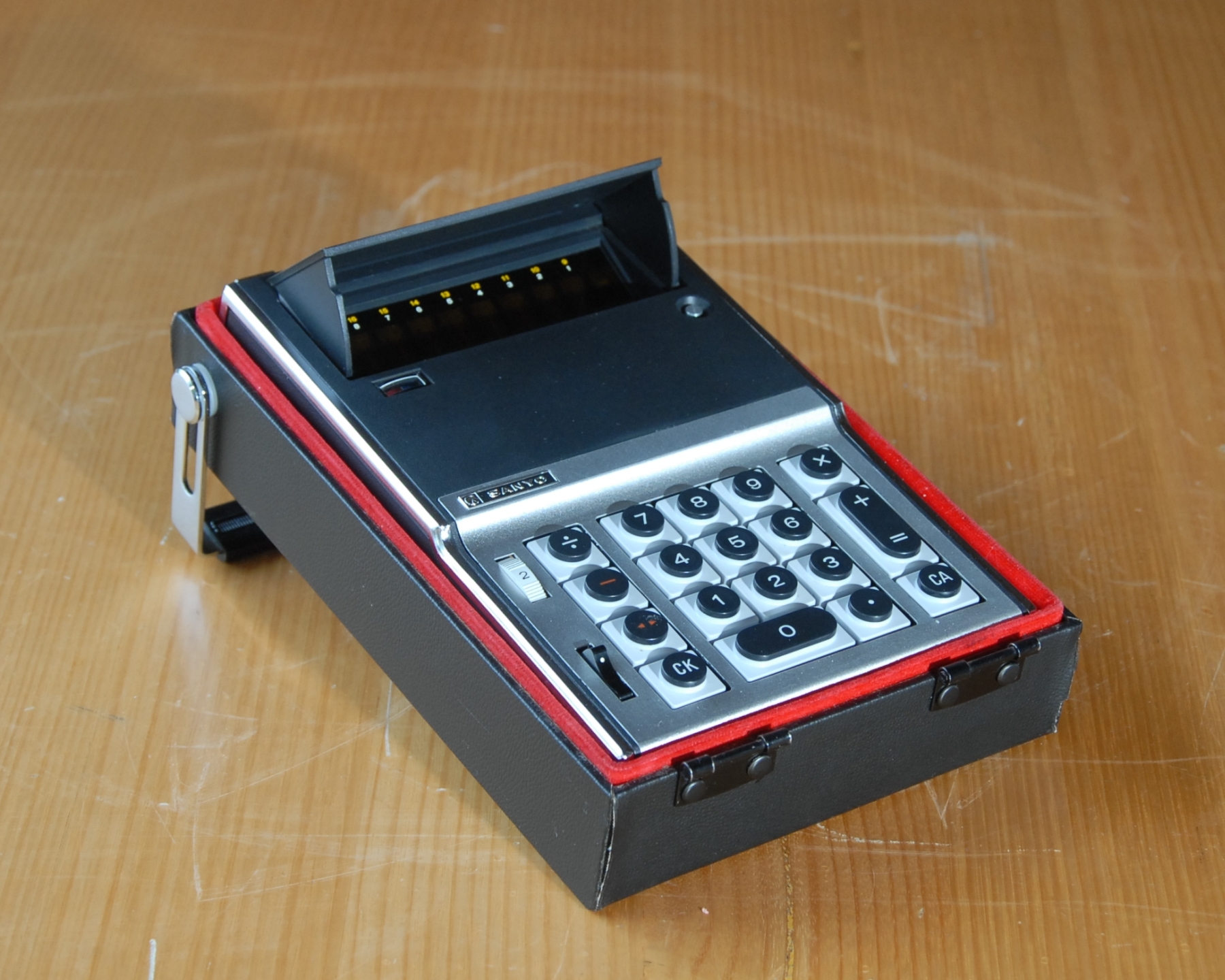Sanyo ICC-82D Calculator
The Sanyo ICC-82D was introduced in 1970 and is one of the very first handheld scale calculators.
Sanyo was an early pioneer of NiCd rechargable cells and added this technology to the ICC-82D by including a rechargable battery so as to make it fully portable. This represented a remakable level of miniaturisation compared to the prior art and was achieved with a very early LSI chipset, four ICs being required to house all of the calculator logic.
The general presentation and construction shows high values persisting from the dawn-age approach. The calculator has a pop-up display shade which is integrated with the power switch and the machine is supplied in a custom-fitted hard case. The case has a cutout for the power cord so that the calculator can be used without having to remove it from the protection of the case.
The ICC-82D is a four-function machine with switch selected fixed decimal point. There is no memory function. It has an 8-digit display but its calculation registers are 16 digits wide and numbers up to 16 digits can be entered and manipulated, subject to limits mentioned below. The display normally displays the lower order 8 digits and a special key must be pressed to show the higher order 8 digits. If a calculation generates more than 8 digits of result then a warning lamp lights to show that higher order digits are present.
The ICC-82D handles negative numbers correctly according to the rules of arithmetic but negative numbers are entered and displayed as their ten’s complement. So, -1 is represented as 9999999999999999, -2 as 9999999999999998, -3 as 9999999999999997 and so on. The key marked “-” actually performs the ten’s complement operation on the displayed number. This is used:
- to enter a negative number for calculation:
- Enter 1, press “-”, display now shows 9999999999999999 and this is the correct representation to proceed with calculations from a starting value of -1
- to display negative results in natural form:
- 2 minus 4 gives a display of 99999998 and the operator must recognise that this is a 16-digit result of 9999999999999998 which in turn is a ten’s complement negative number
- Pressing the “-” key converts the display to 0000000000000002 but the operator must remember that this is actually minus 2.
- If calculations are to continue, the operator must also remember to convert back to ten’s complement by pressing “-” before proceeding, otherwise the calculations will be continued from +2, rather than -2.

